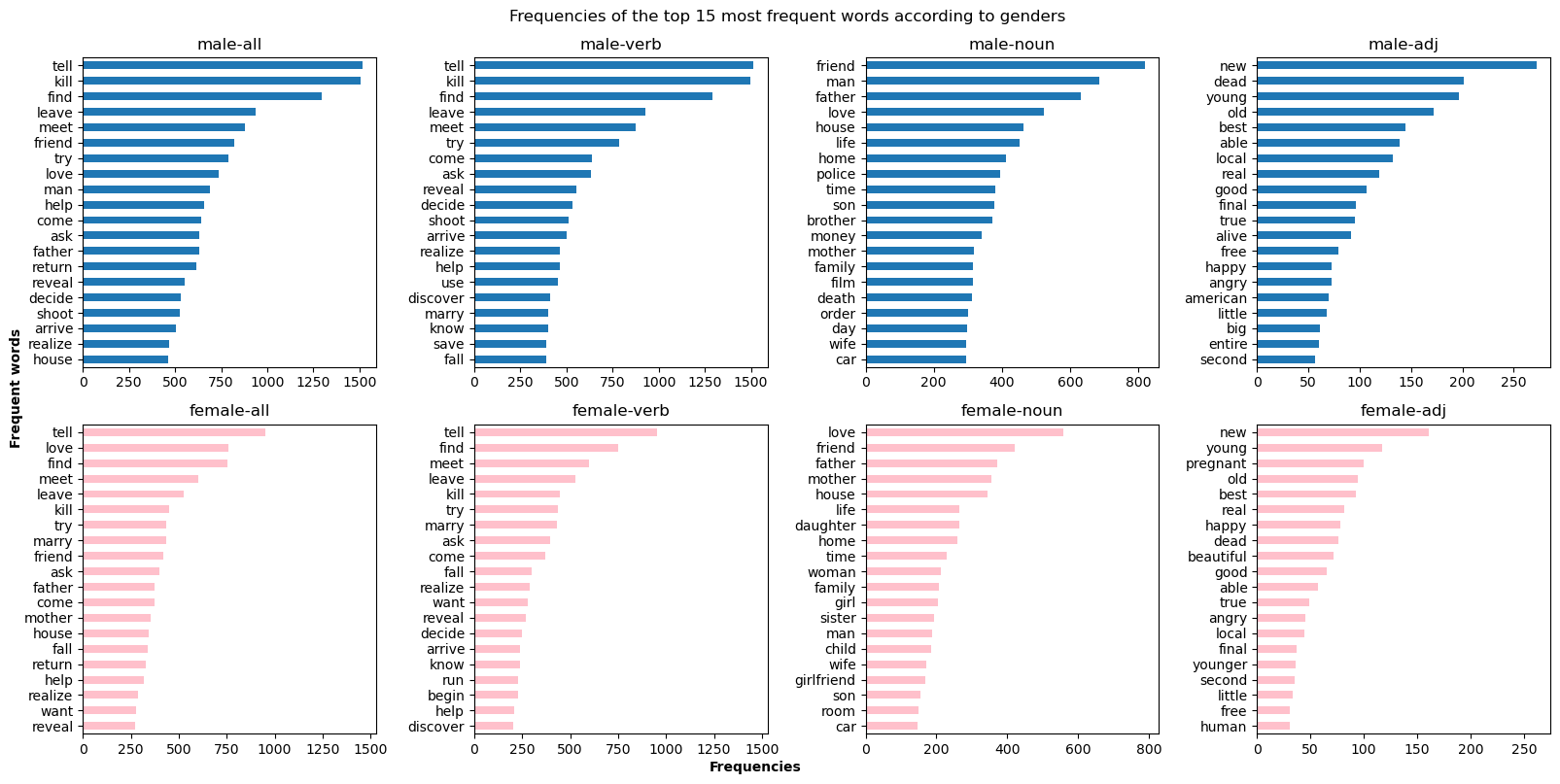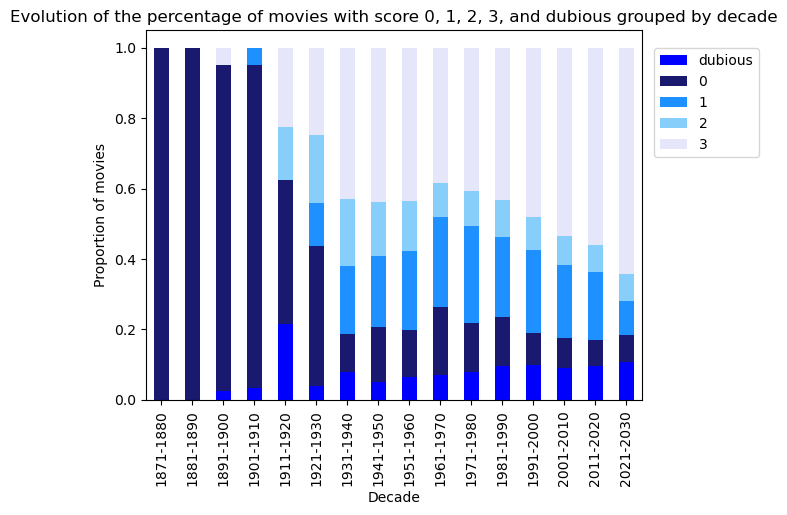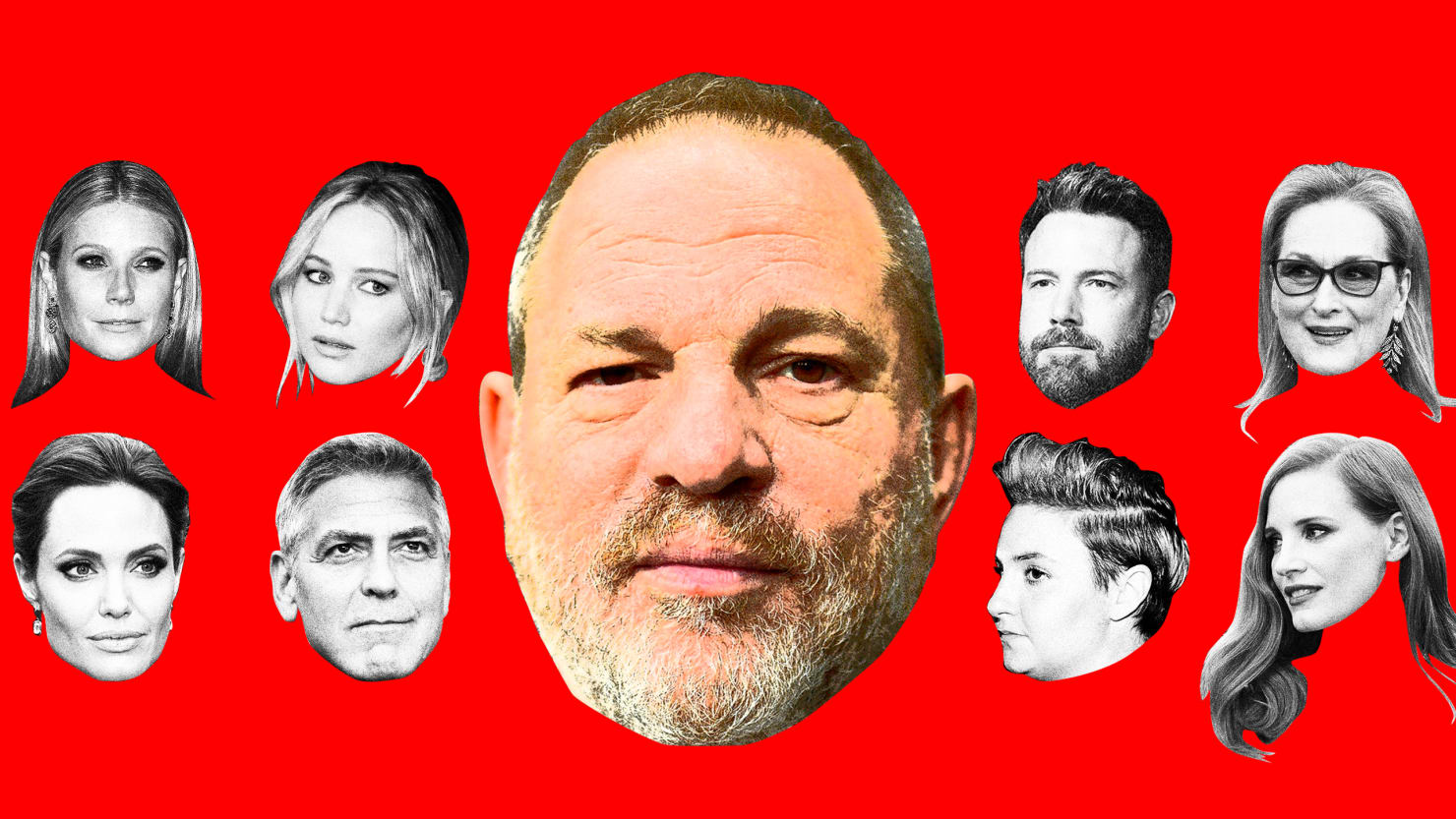
The evolution of the gender gap
in the film industry
Examining the Evolution of Sexism and Discrimination in the Film Industry
In a recent interview with The CEO Magazine, actress and producer Reese Witherspoon spoke out about the ongoing gender imbalances in Hollywood. She discussed the difficulties that women face in the industry, particularly when it comes to the types of roles available to them.
“These women are accomplished and they deserve to be the center of their own stories, But very often, everything the woman in the script says appears to be in service of the male characters.”
~Witherspoon
This quote highlights one of the major issues faced by women in the movie industry – the lack of complex, fully-developed female characters and the frequent sidelining of women's stories in favor of male-driven narratives. The film industry has long been criticized for its gender imbalances, including the underrepresentation of women in acting and directing roles and the frequent awarding of prizes to men. Witherspoon's comments speak to the need for greater representation and equal opportunities for women in Hollywood. In an effort to understand the gender gap in the movie industry, we will use the CMU Movie Summary Corpus dataset to examine the representation of women in movie plots, principal roles, lexical fields, awards nominees, and winners.

First insights on gender gap
From the studied datasets, the overall proportion of female vs. male movie characters and actors looks like this.
We could stop here and say that YES indeed, the cinema industry exhibits a gender gap. But data analysis is never that simple… To have a real insight on gender (in)equality on screen and on set, we worked around different axes around the topic of women representation. Women representation is described in various ways. Firstly, are women numerically present? Then, what are women associated with and how do we talk about these women? What kind of roles and jobs women do are the most appreciated by the public and by the industry itself? And finally, how do women interact with others?
Hey pretty woman, are you there?
Examining movie plots allows us to analyze the prevalence of feminine and masculine pronouns to understand the representation of each gender on screen, as summaries are the direct representation of the movie itself. Our analysis shows that there is a significant difference between the occurrence of feminine and masculine pronouns in the summaries, with feminine pronouns appearing in only 70% of summaries and masculine pronouns appearing in 89% of them. This suggests that there may be a disparity in the representation of men and women in these movies.
In terms of numbers, masculine pronouns are almost 5 times more used than feminine pronouns. This phenomenon of numerical superiority compared to the actual ratio of men and women in the studied movies (reminder: 1 to 3), if we can say so, can at least be partly explained by the English language itself. Masculine pronouns can be used in order to target a generic audience and not exclusively men. We cannot discuss women's representation without having a look at the main protagonist of a movie. Everyone agrees that the main character is the most important character in a film. Through this person, an audience experiences first-hand the emotions and consequences of the narrative surrounding them. The proportion of female main characters is aligned with the proportion of female characters on the entire dataset, with approximately 37% of women protagonists. Having a look at the most interesting and homogeneous data, from 1970 until 2011, confirms the positive trends in the evolution of male and female main characters. This increase for both groups is due to the large increase in the number of movies released each year.
Let's compare comparable things, by looking at the evolution trend on the percentage of main characters.
In a 40-year period, between 1970 and 2011, we clearly see that there are more and more feminine main characters in proportion and that there are logically less masculine main characters: it is a real gap diminution on the studied time-lapse. This is a very important result, as we know that female role models (for example, under the embodiment of movie main characters) are key to accelerating gender equality!
Let’s talk about women
Women undergo stereotypes: they are often expected to be accommodating and emotional, while men are usually expected to be self-confident and aggressive. But how are these stereotypes, about women and men, translated into movies?


Women will most probably be present in movie genres such as Romance film, Comedy and Drama, while men are mostly seen in Action, Adventure and Crime fiction. We also see a lot of men in Romance movies because well, for a romance to take place, two people (often a guy and a girl) are needed.
Looking at movie summaries can be very informative on the way women and men are described. Looking at words often associated with women that differ from words associated with men, “love” is the first one. So cliché right… In order to deepen our analysis, we looked at words directly associated with the main character. More precisely, we focused on words located 2 words apart from the name of the main character, which leaves us with the following textual analysis.

When talking about men, usually masculine words are used. We find the words “father” and “son” for example. When talking about women, both feminine and also masculine attributes are used. For female characters, both “father” and “mother”, as well as “son” and “daughter” are often used. This imposes the idea that female characters are created to support male characters, as Whiterspoon describes in her interview, or that they can not exist by themselves. For men, we quickly find nouns such as “kill”, “police”, which are associated with violent topics. For women, nouns and adjectives such as “love”, “beautiful”, and “marry” are present. The 3rd most used adjective for women is “pregnant”, while not a majority of female characters are pregnant in movies. It makes the viewers associate ideas of love, sweetness and motherhood to women. Finally, there are more action verbs used to describe male characters. This reinforces the idea that male characters are active protagonists and that female characters are more passive.
I like what you do!
The gender gap in the movie industry is not limited to the representation of characters on screen, but also extends to the recognition and opportunities afforded to those working behind the scenes. For example, the Academy Awards, considered as one of the most prestigious awards in the film industry, honors not only actresses or actors but also directors, songwriters or movie engineers. The plot below shows the number of male and female nominees at the Academy Awards in various categories. It indicates that there is a potential gender bias in the movie industry, as the number of male and female nominees is not balanced. It is worth noting that in many categories, the number of female nominees is significantly lower compared to their male counterparts. In fact, in only a few categories, such as costume design and makeup and hairstyling, is the number of male and female nominees roughly comparable.
It is important to acknowledge that while the overall trend may show an improvement in the representation of women in the Academy Awards nominees, it is crucial to examine the representation of women within specific categories. For example, while the number of women nominated for all categories may have increased over time, the representation of women in behind-the-scenes roles may still be disproportionately low.
Statistical tests were conducted in order to determine if there was a gender gap in certain categories of the Academy Awards. The results of the test show that there is no significant difference between the number of men and women who won in the categories that were analyzed. This means that men and women have an equal chance of winning in these categories. Overall, it is encouraging to see an improvement in the representation of women in the Academy Awards nominees, but this does not necessarily mean that there is no gender gap in these categories. To fully understand if there is a gender gap, it would be necessary to consider more factors and examine a wider range of data.
A lesson about interaction by Alison Bechdel
Our analysis suggests that the film industry remains heavily male-dominated, but there are signs of progress in the representation of women. One way to measure the gender gap in films is through the Bechdel test, which highlights the over-representation of masculine protagonists or the under-representation of women protagonists. This score is mainly computed based on the interaction between protagonists of the same and of different gender, for example by assessing whether a film features at least two female characters who have a conversation about something other than a man. The Bechdel test is named after cartoonist Alison Bechdel, who introduced the concept in a 1985 comic strip. It is not a definitive measure of a film's quality or feminist credentials, but it does provide a simple way to identify films that may have limited or stereotypical portrayals of women. The Bechdel score goes from 0 to 3, zero being the worst mark in terms of women representation, and 3 being the highest score that attest of gender quasi-equality. Dubious indicates an uncertainty concerning the grading.

By looking at the evolution of the Bechdel scores of movies, we can see that the film industry is moving towards a more balanced and nuanced gender gap, with a larger proportion of high scores through the years, at least for the representation of women on screen.
Conclusion

After conducting an analysis on the gender gap in the film industry, it is clear that there is a significant imbalance in the representation and opportunities afforded to male and female movie industry workers. This gap can be observed in various areas of the industry, including the number of female directors and writers, the prevalence of male-dominated storylines and characters, and recognition received by male and female talent. This gender gap is a complex issue with many contributing factors, including longstanding cultural biases, systemic discrimination, and a lack of diversity and inclusivity in the industry. Closing the gender gap in the film industry will require a concerted effort from all stakeholders, including studios, production companies, and industry organizations, to promote equal representation and opportunities for women. It will also require a commitment to diversity and inclusivity at all levels of the industry, from hiring and casting to financing and distribution. We can already observe a certain improvement, for example in the ratio of lead roles attributed to women as well as in the representation of women on screen with the evolution of the Bechdel score. But it is important to continue to critically examine and address imbalances and inequalities in the representation of all categories within the film industry. Overall, it is clear that the gender gap in the film industry is a pressing issue that needs to be addressed in order to create a more diverse and equitable industry for all. By acknowledging and addressing this gap, we can work towards creating a film industry that better reflects and serves the diverse experiences and perspectives of our society.